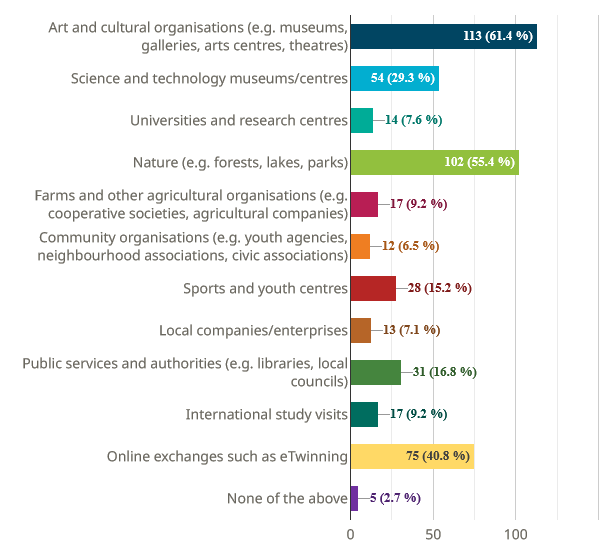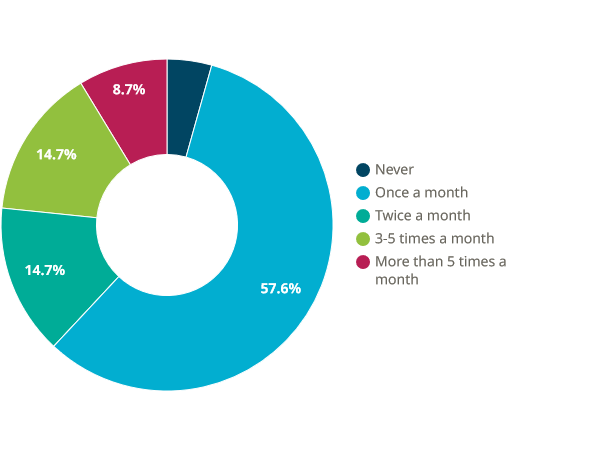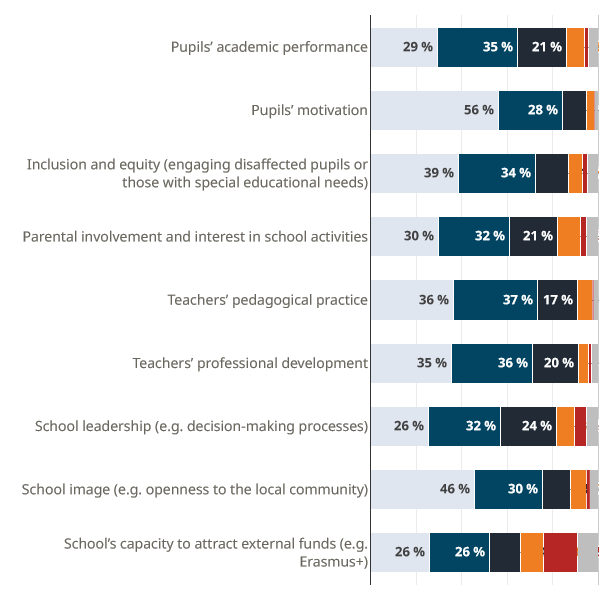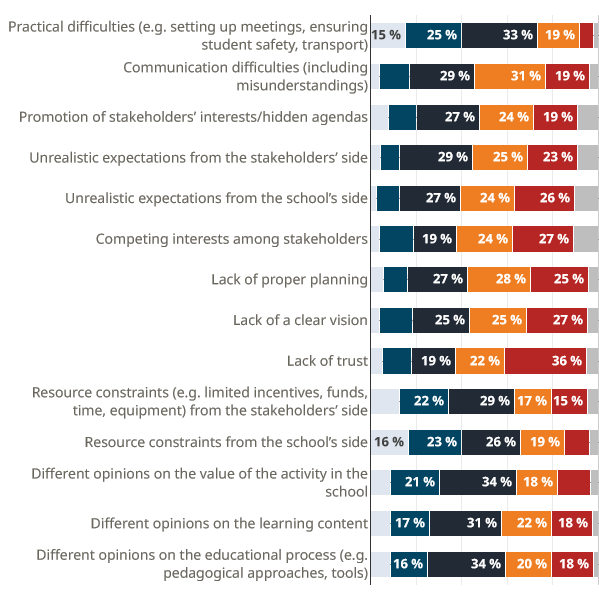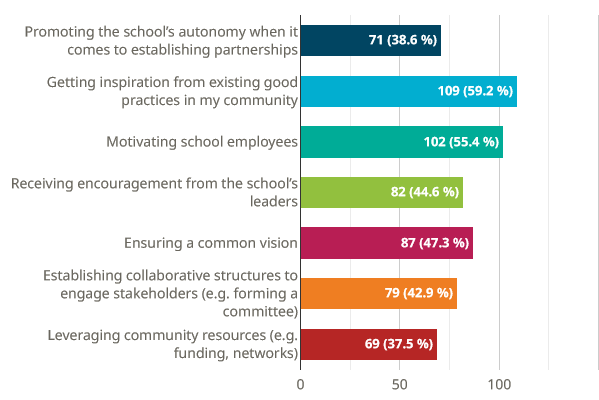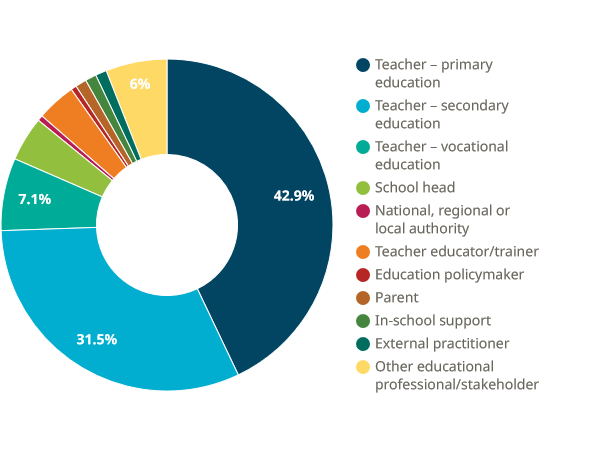Survey on learning outside the classroom - Results
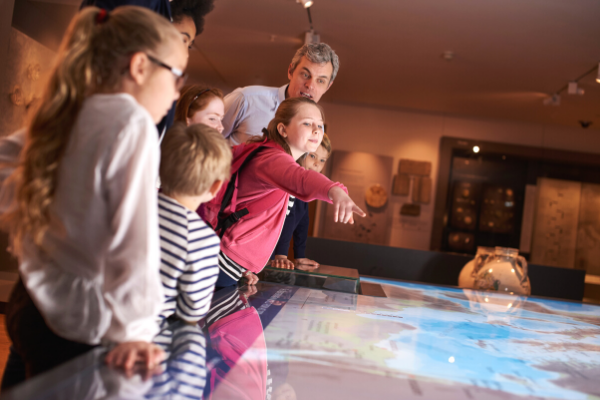
The term “learning settings” recognises that nowadays, learning takes place in a range of locations, not just in classrooms and schools. These settings can support engaging, authentic, and real-world learning, especially when schools collaborate with external stakeholders. In this survey, we’re asking about your views on learning outside the school setting.
It is no longer accepted that classrooms are the only place where learning can take place. In recent years, there has been a growing interest in exploring how in-school learning can be integrated with learning outside the classroom. This has especially increased since the COVID-19 pandemic and in the context of learning spaces and blended learning.
Learning outside the classroom is typically a mix of curricular and non-curricular learning experiences outside of formal education. It can be a very appropriate and engaging approach for pupils who may struggle with formal, classroom-based learning in particular. This kind of learning calls for partnerships between schools and stakeholders in the local community such as parents, local businesses, museums and libraries, ecological and natural organisations, and youth and sports facilities.
This survey aimed to gauge views on learning outside the school setting. It was open on School Education Gateway from 22 March to 30 May and attracted 184 respondents from 25 countries, 86% of whom were teachers or school leaders.
Results (N = 184)
1. Which of the following learning spaces has your school used for learning outside the classroom?
More than half of the respondents made use of art/cultural organisations and nature to teach outside their classroom. Online exchanges such as eTwinning have also been used extensively. The least frequently cited options are international study visits, farms/agricultural organisations, universities and research centres, local companies/enterprises, and community organisations. Approximately 3% of respondents indicated that they had not used any of the learning spaces listed.
2. How often do activities in your school, or a school you know of, involve learning outside the classroom?
A majority of 58% of respondents reported that learning outside the classroom occurs once a month, while 39% reported twice per month. Around 9% indicated that they organise outdoor activities more than five times per month. About 4% stated that they do not plan any outdoor activities at all.
3. By involving other school stakeholders in your daily practice, have you noticed any positive impact in the following areas?
To a very great extent
To a great extent
To a moderate extent
To a small extent
Not at all
A majority of respondents reported that involving different stakeholders in their daily practice has had a positive impact on all the areas mentioned, to a great or very great extent. The most frequently cited effect was the positive impact on pupils’ motivation. More than two thirds of respondents also cited the impact on the school’s image, on teachers’ pedagogical practice, on inclusion and equity in learning, and on teacher professional development.
4. Which of the following challenges have you experienced while collaborating with other education stakeholders?
To a very great extent
To a great extent
To a moderate extent
To a small extent
Not at all
The most common challenges faced by respondents when collaborating with stakeholders were practical difficulties and resource constraints (either from the school’s side or the stakeholders’ side). Out of the available options, respondents had the least trouble with unrealistic expectations, either from the stakeholders’ side or the school’s side.
5. Which of the following strategies are most effective for successful partnerships between your school and other stakeholders?
When it comes to establishing partnerships between schools and other stakeholders, a majority of respondents found it effective to use existing good practices for inspiration and motivate school employees. A little less than half of the respondents highlighted the importance of a common vision, encouragement from school leaders, and the establishment of collaborative structures to engage stakeholders. Fewer respondents prioritise promoting the school's autonomy and leveraging community resources.
Conclusion
The survey results suggest that the vast majority of respondents implemented activities beyond their classroom by making use of diverse learning spaces at least once a month. In this regard, collaborating with external stakeholders seemed to have a positive impact on several areas of their daily practice, such as pupil motivation, school image and pedagogical practice. Nevertheless, a small portion of respondents indicated that they faced difficulties while working with other stakeholders, such as practical difficulties and resource constraints. Effective strategies for forging partnerships may include getting inspired by other existing good practices in the community and motivating school employees.
It should be noted that these results are based on a relatively small response rate, possibly skewed towards those with an interest in learning outside the classroom.
The European Initiative by the New European Bauhaus and the Council Recommendation on blended learning underline the value of using diverse spaces and environments in the learning process, thereby developing synergies with external stakeholders. For more on this topic, check these resources:
- How would you like to see the future of your learning environment?
- Designing blended learning experiences: the role of the teacher in the New European Bauhaus
- What a visit to a museum can mean for children
- Lesson plans for learning in a museum
- A young generation of entrepreneurial global citizens
- Teachers get involved in a new generation of learning environments
- ‘Learning spaces’ webinar

